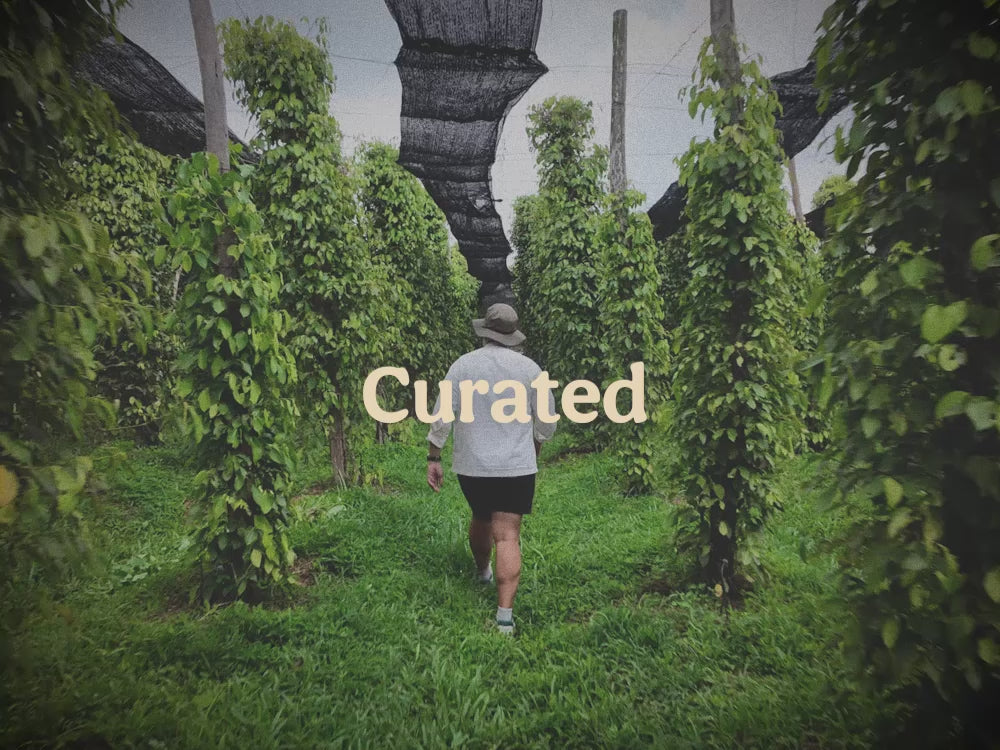FAQ
What makes Piper's peppercorns so special?
Piper Pepper isn’t your average black dust — it’s a 50/50 blend of red and black Kampot peppercorns, grown in the mineral-rich soil of southern Cambodia. Each grind bursts with layered heat, fruit, and fragrance — proof that real pepper has terroir, too.
Where does Piper Pepper come from?
Our pepper is PGI-certified Kampot pepper, grown by independent Cambodian farmers using natural fertilizers and biodiverse farming methods. The pepper vines absorb subtle notes from nearby fruit trees — giving every bite a depth and aroma you won’t find anywhere else.
How should I use Piper Pepper?
Think beyond finishing touches — Piper is versatile enough for everyday cooking and chef-level moments. Crush it over eggs, pasta, or grilled meat for bold heat, or use it in cocktails, desserts, or even over fruit for a surprising twist. (Pro tip: grind it fresh — always.)
How should I store my Piper Pepper?
Keep it in a cool, dry place. Your peppercorns will come in 20g sachets to lock in freshness. Avoid humidity and direct sunlight — the oils are what make Kampot pepper so fragrant, and you want to keep those intact. Stored right, your pepper will stay vibrant and aromatic for months.
Shipping info
When will my Piper ship?
Piper is currently in pre-order mode — our next batch is expected to land in our warehouse in late November 2025, with orders shipping out in early to mid December 2025. Just in time for holiday gifting (or for that well-earned upgrade to your own ritual).
Where do you ship?
Our primary markets are the U.S., Canada, Australia, and Singapore, where most of our Pipers are headed first. We do ship to other countries too — just note that shipping costs may be slightly higher outside these regions since we don’t yet have local fulfillment there.
Need Help?
If you have any questions or concerns about your order, our team is here to help. Reach out to us at info@piper.now and we’ll be happy to assist you.

The Farm
Our pepper is naturally farmed in Kampot, Cambodia, within the region’s Protected Geographical Indication (PGI) zone.
Smallholder farmers cultivate each vine with organic compost, biodiverse soil, and traditional sun-drying — preserving the land’s balance and the pepper’s bold, complex flavor.



















